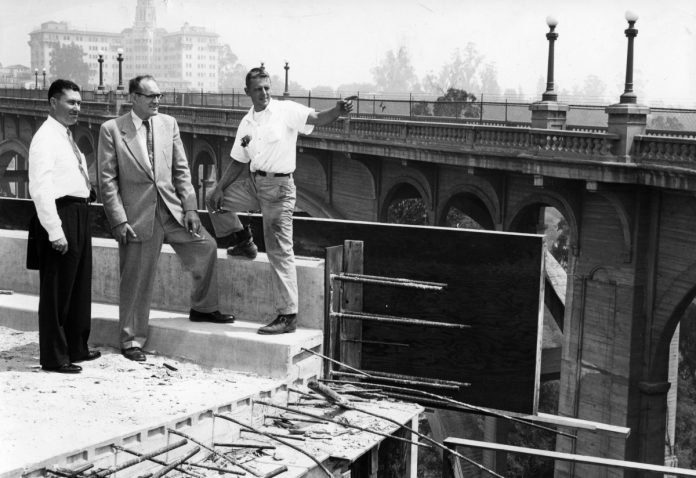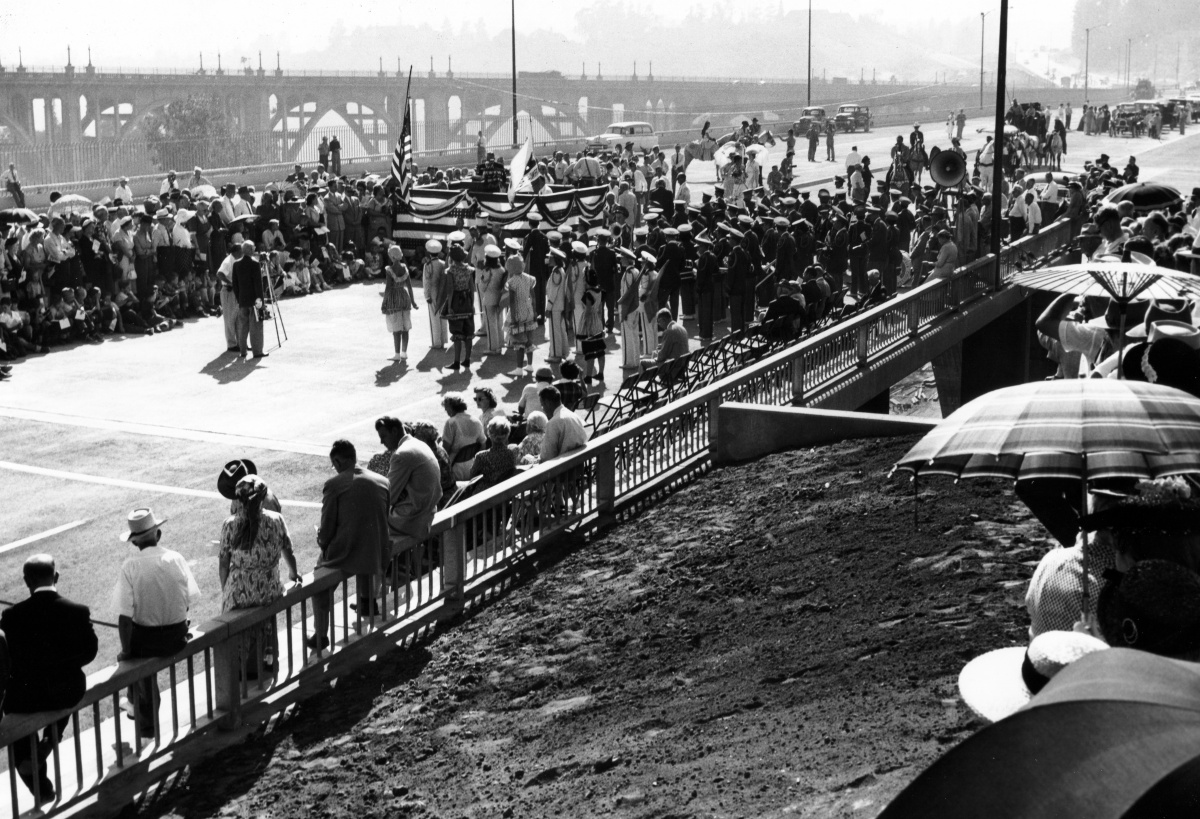
In a couple of weeks on July 18th, the historic Colorado Street Bridge will close to automobiles for its annual bridge party. In perfect view is the Pioneer Bridge, far more massive in construction, it looms over the Arroyo Seco in the direction of the Rose Bowl.
Most people are familiar with the Colorado Street Bridge, often driving across it with a smile. But few motorists even notice “the other bridge” that bows away from it with a massive highway swath three times its width.
Like in The Beatles’ song When I’m Sixty-Four, the Pioneer Bridge turned 64 this year with a similar questioning sentiment. Does anybody care?


Sixty-four years ago on October 8, 1953, the temperature was unusually warm at 100 degrees during the bridge dedication ceremonies. That did not dull the excitement of those who attended.
The bridge was dedicated to the pioneers, “especially the twenty-seven who founded this city near this spot on January 27, 1874.”

The Beatles song ends with a playful muse: “Will you still need me, will you still feed me, when I’m sixty-four?” Sadly, perhaps, most people drive over this magnificent bridge without even giving it a thought.
THROWBACK THURSDAY IS WRITTEN AND PRODUCED BY RICK THOMAS















.png)






